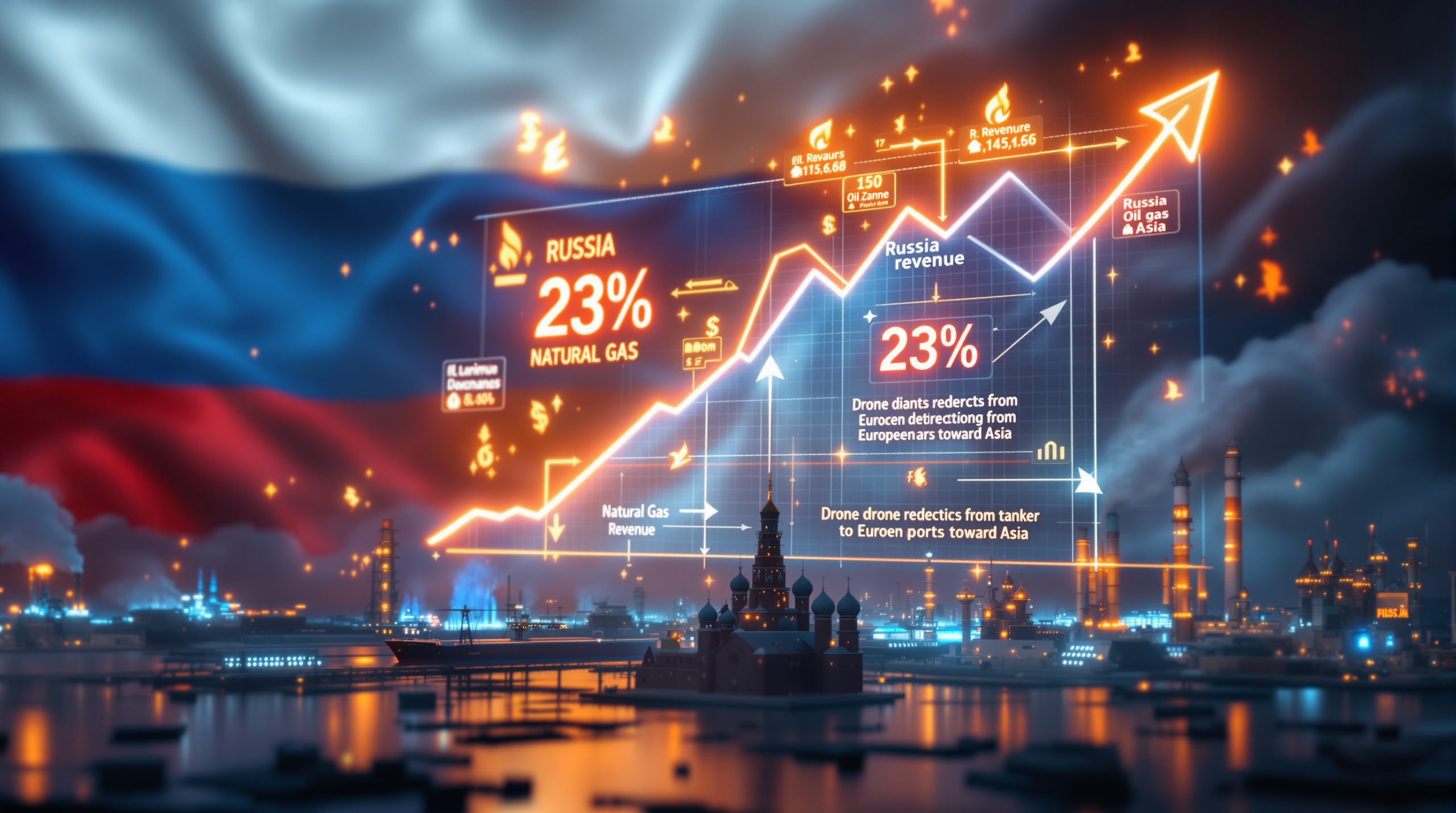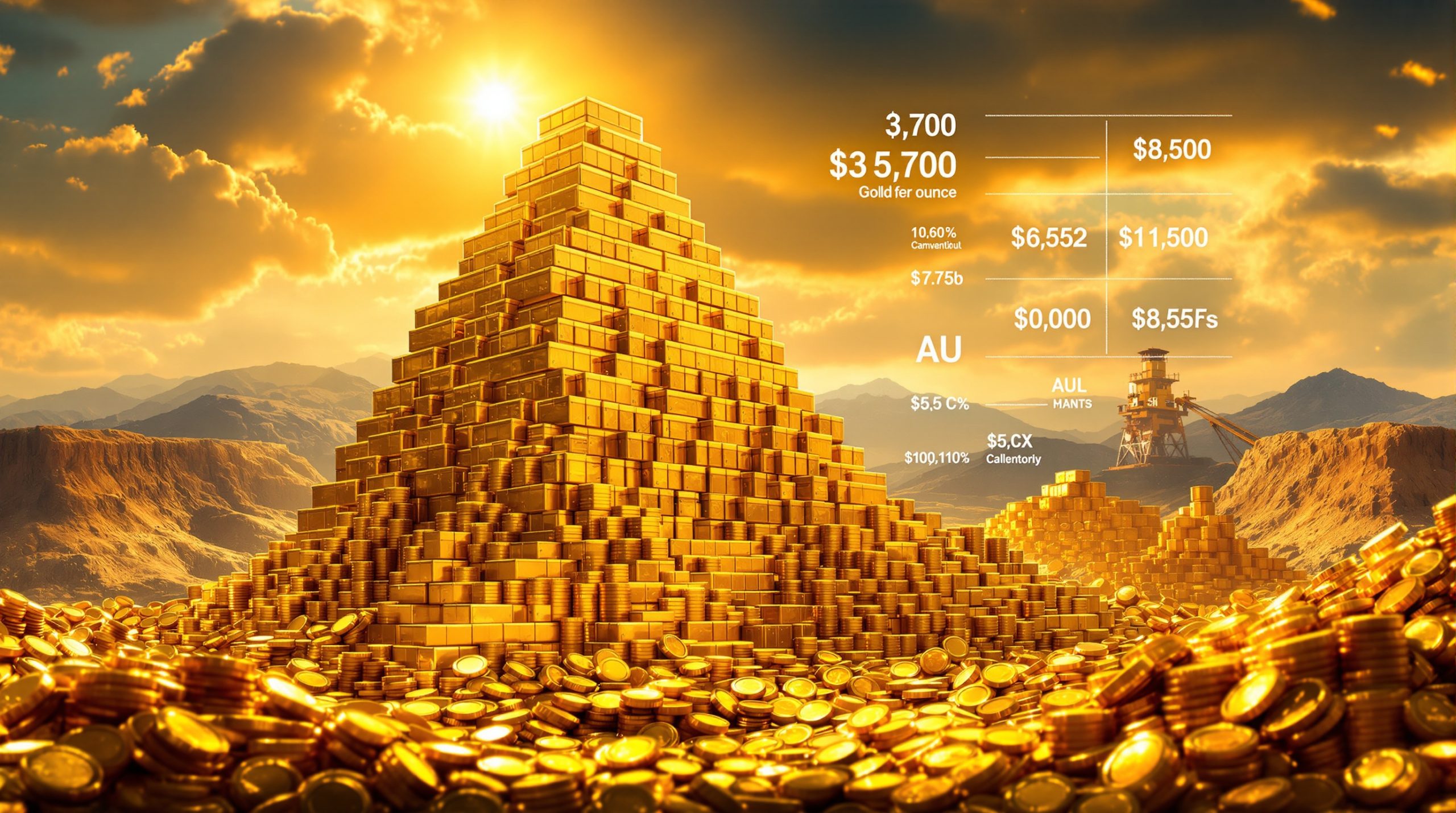What is the US Critical Minerals Fund Initiative?
Understanding the Proposed $5 Billion Investment Vehicle
The United States government is currently in negotiations to establish a $5 billion fund dedicated to critical mineral investments, representing Washington's most significant venture into strategic mineral dealmaking. This initiative would create a joint venture between the US International Development Finance Corporation (DFC) and New York-based investment firm Orion Resource Partners, with each party contributing equal funding that would gradually scale toward the full $5 billion commitment.
The partnership structure mirrors Orion's existing $1.2 billion venture with Abu Dhabi sovereign wealth fund ADQ announced earlier in 2025. With approximately $8 billion in assets under management across private equity, credit, venture capital, and commodity trading, Orion brings substantial mining finance expertise to the partnership.
If the DFC commits its full $2.5 billion portion, this venture would rank as the largest in the agency's history according to government data, signaling the escalating prioritization of mineral security at the highest levels of government.
Key Strategic Objectives Behind the Fund
The fund aims to address several critical challenges facing US mineral security in a rapidly evolving global landscape. Primary objectives include reducing dangerous dependencies on foreign processing capabilities, particularly those concentrated in China, while securing long-term access to minerals essential for clean energy technologies and defense applications.
By creating more resilient supply chains for copper, cobalt, rare earth elements, and other strategic metals, the US seeks to counter China's aggressive global mineral acquisition strategy with substantial American investment power. This represents a direct response to Beijing's decades-long approach of securing critical minerals worldwide through state-backed companies.
The initiative comes amid growing recognition that traditional market forces alone have proven insufficient to drive adequate investment in critical mineral production and processing capacity, necessitating strategic government intervention alongside private capital.
Why Are Critical Minerals Suddenly a National Priority?
The Growing Supply-Demand Imbalance
Industry forecasts indicate severe shortages for numerous critical minerals due to a perfect storm of market conditions. Insufficient investment in new mining projects globally has coincided with declining ore grades at existing operations, creating a fundamental supply constraint as demand accelerates rapidly.
Lengthy permitting processes—often taking 7-10 years in Western jurisdictions—significantly delay new developments, while rapidly increasing demand from clean energy technologies and defense applications creates unprecedented pressure on limited supplies. For instance, copper demand is projected to nearly double by 2035, while current mine development pipelines fall dramatically short of meeting this need.
This dynamic creates both a national security challenge and a potential bottleneck for the energy transition, as materials like copper, lithium, nickel, and rare earths are essential components in everything from electric vehicles to wind turbines and advanced weapons systems.
The China Factor in Global Mineral Markets
China's dominant position in critical mineral processing presents significant strategic concerns for US policymakers. Chinese companies process the bulk of numerous critical minerals, from copper and antimony to rare earth elements and battery metals, creating a chokepoint in global supply chains.
Chinese firms continue aggressively acquiring overseas mining assets to secure raw material supplies for domestic processing facilities. The Democratic Republic of Congo, the world's biggest producer of cobalt and second-largest source of copper, has seen substantial Chinese investment in recent years, with output of both metals surging following these capital injections.
This concentration creates vulnerability in US supply chains for defense and energy technologies, with the potential for supply disruptions during geopolitical tensions. The fund represents a direct response to China's strategic mineral positioning and reflects growing bipartisan recognition that America's critical minerals energy security constitutes a serious national security vulnerability.
How Would the Critical Minerals Fund Operate?
Proposed Structure and Investment Approach
The fund would operate as a true public-private partnership, with both the DFC and Orion providing equal capital contributions that scale gradually toward the $5 billion target. This approach allows for careful investment deployment while maintaining significant financial firepower for strategic acquisitions.
The partnership would focus across the full mineral supply chain, potentially including direct mining investments, processing facility development, and related infrastructure projects. Both equity investments and various financing arrangements would likely be employed, providing flexibility to structure deals appropriate to specific projects and geopolitical contexts.
This approach builds upon the DFC's existing investment activities in the mining sector. The agency has already approved multiple mining investments, including a $150 million loan to support Syrah Resources, which operates a graphite mine in Mozambique and supplies battery materials to Tesla.
Targeted Minerals and Geographic Focus
While official investment criteria remain under negotiation, the fund would likely prioritize several key mineral classes and strategic regions. Copper and cobalt projects, particularly in the Democratic Republic of Congo's mineral-rich Copperbelt region, represent obvious targets given their critical importance to electrification and battery technologies.
Rare earth element operations in the US and allied nations would align with defense priorities, while graphite, lithium, and other battery minerals would support clean energy objectives. The White House has also specifically highlighted interest in projects in geopolitically strategic regions like Ukraine and Greenland's critical minerals.
This targeted approach reflects both mineral criticality assessments and broader geopolitical considerations. The DFC has already demonstrated this strategic focus by committing more than $550 million to upgrade the Lobito Corridor railway infrastructure, which transports minerals from central Africa's copper-belt to an Atlantic port in Angola.
What Makes This Initiative Different from Previous Efforts?
Unprecedented Scale of Government Involvement
The US in talks to set up 5 billion fund for critical mineral deals represents a significant escalation in US government participation in mineral markets, dwarfing previous DFC investments in the mining sector. This scale signals recognition of critical minerals as essential to national security, not merely commercial commodities.
By creating a structured vehicle for public-private partnership in mineral development, the US government establishes a model that could potentially be expanded with additional funding if proven successful. This approach allows government capital to leverage private sector expertise while maintaining strategic direction over investment priorities.
The initiative represents a philosophical shift in US resource policy, acknowledging that greater state involvement in critical mineral markets has become necessary in an era of strategic competition, particularly given China's state-directed approach to securing mineral resources.
Comparison to Other US Mineral Security Measures
The fund complements other recent US government actions addressing critical mineral supply vulnerabilities. In July 2025, the Pentagon made a landmark $400 million investment in US rare-earths producer MP Materials, coupled with a guaranteed floor price mechanism to protect the company's profits during market downturns.
Last month, the Department of Defense launched its first tender to stockpile cobalt since the Cold War ended, signaling renewed focus on maintaining strategic material reserves. These measures collectively represent a multi-faceted approach to mineral security, combining direct investment, stockpiling, and infrastructure development.
The fund's establishment also comes as the DFC seeks expanded authorization through a reauthorization process expected next month. The agency is likely to gain enhanced flexibility to invest in wealthier countries and take on riskier projects, potentially doubling or tripling its investment capacity to attract more private-sector participation.
What Specific Deals Could the Fund Target?
The Strategic Competition for Chemaf Resources
One potential early target for the fund involves copper-cobalt assets in the Democratic Republic of Congo that have become symbolic of US-China competition for strategic minerals. Orion has already partnered with Virtus Minerals, a firm run by veterans of US military and intelligence services, to bid for Chemaf Resources.
This follows the abandonment of a previous deal involving Chinese state-owned arms manufacturer Norinco Group. Congolese authorities withheld approvals for the Chinese acquisition after US diplomatic pressure, highlighting the increasingly direct competition between Washington and Beijing for control of critical mineral assets.
The Chemaf case illustrates the fund's potential role in providing competitive capital for strategic acquisitions that might otherwise default to Chinese ownership, particularly in regions like central Africa where Chinese investment has historically dominated the mining sector.
Other Potential Investment Targets
Beyond Chemaf, the fund could pursue various strategic investments across multiple continents. The Trump administration has specifically highlighted mineral opportunities in Ukraine and Greenland, regions with significant untapped resources that align with broader geopolitical objectives.
Copper assets in politically stable jurisdictions facing permitting challenges represent logical targets, as government backing could potentially accelerate development timelines. Processing facilities to reduce dependence on Chinese refineries would address a critical vulnerability in mineral supply chains, particularly for rare earths and battery materials.
Strategic partnerships with allied nations' mining companies could also emerge as a priority, creating multinational consortiums capable of competing with Chinese state-backed enterprises. This could include collaboration with Japanese, Australian, or European partners with complementary capabilities and shared concerns about mineral security.
How Does This Fit into Broader US Mineral Policy?
Evolution of the DFC's Role in Resource Security
The DFC is positioned to become an increasingly significant instrument of US economic and foreign policy. Created toward the end of Trump's first term, the agency is now seeking expanded capacity through an upcoming reauthorization process expected to significantly enhance its investment capabilities.
The White House is pursuing authorization to double or triple the DFC's investment capacity, while also providing greater flexibility to invest in wealthier countries and riskier projects. This expanded mandate would allow the agency to more effectively compete with Chinese state-backed investment vehicles in strategic sectors.
Ben Black, nominated to lead the DFC but still awaiting Senate confirmation, has emphasized that the agency "should never be crowding out private capital" and must increase its engagement with New York financial firms. This suggests a continued focus on public-private partnership rather than direct government ownership of mineral assets.
Bipartisan Support for Mineral Security
Critical mineral security has emerged as a rare area of policy continuity across administrations, reflecting broad recognition of the strategic importance of these resources. The DFC was initially created during Trump's first term, while the Biden administration subsequently expanded DFC financing for critical mineral projects.
The Trump minerals order has now made mineral security a clear priority for its second term, focusing on securing access to copper, cobalt, rare earths, and other strategic materials. This policy continuity reflects a growing bipartisan consensus that mineral dependencies represent a significant national security vulnerability requiring sustained attention.
Congressional support spans both parties, with lawmakers increasingly recognizing that critical minerals underpin both the clean energy transition and national defense capabilities. This bipartisan backing provides a stable foundation for the fund's operations across potential future administration changes.
What Challenges Could the Fund Face?
Implementation and Operational Hurdles
Several factors could potentially complicate the fund's effectiveness as it moves from concept to operation. Finalizing agreement terms between government and private sector partners remains a work in progress, with key details still under negotiation according to those familiar with the discussions.
Navigating complex approval processes for mining investments, particularly in challenging jurisdictions, will require sophisticated risk management and diplomatic engagement. Balancing commercial returns with strategic objectives may create tension in investment decisions, requiring careful governance structures.
Environmental and social governance considerations present another layer of complexity, as mining projects increasingly face scrutiny on sustainability metrics. The fund will need robust ESG frameworks to manage these considerations while still advancing strategic objectives.
Market and Competitive Dynamics
The fund will operate in a highly competitive global landscape where Chinese companies have established significant first-mover advantages in many regions. Chinese firms typically move quickly and accept higher risks than Western investors, creating an asymmetric competitive environment.
Private mining firms may resist government involvement in commercial decisions, potentially limiting partnership opportunities with established operators. Commodity price volatility could impact investment returns, requiring sophisticated financial structures to manage market risks.
Long development timelines for mining projects—often 5-10 years from discovery to production—may delay strategic benefits, requiring patient capital and a long-term perspective. This creates a natural tension with political timelines and the desire for visible near-term results.
How Might This Impact Global Mining Markets?
Potential Effects on Investment Flows
The fund could significantly influence global mining investment patterns by accelerating capital deployment to projects aligned with US strategic interests. This might create premium valuations for assets in politically favorable jurisdictions as competition intensifies for quality mining properties.
The presence of government-backed capital could increase overall investment flows into the mining sector, potentially addressing the chronic underinvestment that has contributed to looming supply shortages. However, this could also create potential distortions if strategic considerations override market fundamentals.
The fund might also drive increased investment in processing and refining capacity outside China, helping to diversify critical chokepoints in mineral supply chains. This would address a significant vulnerability while potentially creating new regional processing hubs in allied nations.
Implications for International Mining Companies
Major mining firms will need to navigate a changing landscape as government interests increasingly influence industry dynamics. The fund could represent a new source of capital for projects aligned with US interests, potentially creating partnership opportunities for companies with compatible assets.
Mining companies may face increased pressure to demonstrate supply chain security and transparency, with preferential treatment potentially available for those meeting strategic criteria. This could accelerate the trend toward "friendly" supply chains separate from Chinese-controlled networks.
Companies may need to reevaluate Chinese partnerships and ownership structures as geopolitical considerations become more prominent in investment decisions. This creates both challenges and opportunities as firms position themselves within an increasingly bifurcated global mineral landscape.
What Could This Mean for Critical Mineral Prices?
Market Impacts of Strategic Investment
The fund's activities could influence mineral pricing dynamics through several mechanisms. Strategic purchasing and stockpiling activities, such as the Pentagon's recent cobalt tender, may provide price support during market downturns, reducing volatility but potentially distorting price signals.
Increased investment in production capacity could affect long-term supply fundamentals, potentially moderating price projections for minerals receiving significant strategic investment. However, this effect would likely be gradual given the extended timelines for bringing new mining projects online.
The market might increasingly recognize premium pricing for "friendly" supply chains, with materials from trusted sources commanding higher values than those from politically sensitive origins. This could effectively create a two-tier pricing system for certain critical minerals based on provenance and security considerations.
Long-term Supply-Demand Balance Effects
Strategic investments could reshape future market fundamentals by accelerating development of previously marginal projects that align with security objectives. This could potentially lead to localized oversupply in certain minerals if strategic investments significantly exceed market demand.
The creation of more diverse and resilient supply chains would likely reduce extreme price volatility by limiting the impact of disruptions in any single region. Strategic buffers such as government stockpiles could further moderate price swings during supply shocks.
Over the longer term, these interventions might help address the projected supply gaps for critical minerals, particularly if they successfully catalyze broader private sector investment. However, the impact would vary significantly across different mineral markets depending on existing supply-demand dynamics.
How Should Investors View This Development?
Investment Opportunities in the Critical Minerals Sector
The fund's creation could create various investment angles for market participants. Companies positioned to receive fund investments or partnerships would benefit from both capital access and implicit government support for their projects, potentially commanding premium valuations.
Miners with assets in politically favorable jurisdictions—particularly those with advanced projects requiring financing—could see increased interest and potentially accelerated development timelines. Processing and refining operations outside Chinese control might attract particular attention as the US seeks to address this vulnerable link in supply chains.
Technology providers enabling innovative mineral processing or recycling solutions could benefit from increased investment in supply chain diversification. Firms developing more environmentally sustainable extraction methods might find particular favor as ESG considerations remain important alongside strategic objectives.
Risk Factors to Consider
Investors should weigh several potential complications when evaluating opportunities in this space. Political risk remains significant, as government priorities could shift with administration changes or budget constraints despite the current bipartisan consensus on mineral security.
Execution challenges in developing mining projects remain substantial regardless of funding sources, with technical, environmental, and community issues frequently causing delays or cost overruns. The fund's strategic investments would not be immune to these industry-wide challenges.
Market distortions from non-commercial investment criteria could potentially create inefficient capital allocation in some cases, while the potential for oversupply in targeted minerals presents a longer-term risk if strategic investments significantly exceed actual market demand.
What's Next for the Critical Minerals Fund?
Timeline and Implementation Steps
The fund's development will likely follow several phases as it moves from concept to operation. Finalizing agreement terms between the DFC and Orion represents the immediate next step, with negotiations still ongoing according to those familiar with the discussions.
Congressional review and potential authorization expansion through the upcoming DFC reauthorization process would provide the necessary funding and mandate. Initial deal announcements targeting high-priority minerals would likely follow, with Chemaf Resources potentially among the first investments based on Orion's existing involvement.
Gradual scaling of investment activities toward the $5 billion target would occur over time, allowing for careful deployment while maintaining strategic focus. The fund's early successes or challenges would likely influence the pace of capital deployment and potential expansion of the model.
Indicators to Watch
Several key signals will indicate the fund's progress and potential impact. An official announcement confirming the fund's establishment would represent the first concrete step, followed by details on investment criteria and governance structures.
The first investment targets and deal structures would provide insight into operational priorities and approach. Congressional action on DFC reauthorization will determine the agency's expanded capabilities and funding capacity, directly influencing the fund's potential scale.
International reactions, particularly from China and allied nations, will shape the geopolitical context for the fund's activities. Chinese responses might include accelerated acquisition efforts or new incentives for their own mining companies, while allied nations might consider similar initiatives or potential collaborations.
Critical Minerals: Strategic Assets in a Changing World
Beyond Raw Materials: The Technology Implications
Critical minerals represent more than just raw materials—they form the foundation of technological capabilities that define modern economic and military power. Rare earth elements enable precision guidance systems in advanced weapons, while copper forms the backbone of electrification and renewable energy systems.
The concentration of processing capabilities creates particular vulnerabilities that extend beyond mining. Even when raw materials are extracted in friendly nations, dependence on Chinese processing creates persistent supply chain risks that require holistic solutions addressing the entire value chain.
This recognition drives the comprehensive approach embodied in the proposed fund, which would likely target investments across extraction, processing, and manufacturing to create truly resilient supply chains for the most strategically important materials.
The Geological Reality: Quality and Accessibility Challenges
Beyond geopolitical considerations, the mining industry faces fundamental geological challenges affecting critical mineral availability. Declining ore grades at existing operations require processing more material for the same mineral output, increasing costs and environmental footprints.
New discoveries increasingly occur in remote locations or at greater depths, requiring more sophisticated technologies and larger capital investments to develop. These factors contribute to the chronic underinvestment in new mining capacity despite rising demand projections.
The quality of mineral deposits varies significantly across regions, with factors like impurity levels and mineralogical complexity affecting processing costs and feasibility. These technical realities shape investment decisions alongside the geopolitical considerations that drive strategic initiatives like the proposed fund.
Environmental Considerations in Strategic Mineral Development
Addressing environmental impacts remains essential even as strategic imperatives accelerate mineral development. Mining projects face increasing scrutiny regarding water usage, energy consumption, tailings management, and community impacts regardless of their strategic importance.
The fund will likely need to incorporate robust environmental standards to ensure sustainable development, potentially creating a competitive advantage over Chinese investments that sometimes face criticism for lower environmental standards. This creates both challenges and opportunities for project development.
Recycling and circular economy approaches offer complementary pathways to enhance mineral security while reducing environmental impacts, potentially attracting fund investments alongside traditional mining projects. This balanced approach would align strategic objectives with sustainability goals while addressing supply needs through CRM facility developments.
Are You Looking to Get Early Access to the Next Major Mineral Discovery?
Discover significant ASX mineral discoveries as they happen with Discovery Alert's proprietary Discovery IQ model, which turns complex mineral data into actionable insights for both short and long-term investors. Explore why major mineral discoveries can lead to exceptional market returns by visiting Discovery Alert's dedicated discoveries page and position yourself ahead of the market.




